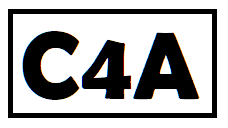Roman Numeral Converter: Your Ultimate Conversion Tool
Are you looking for an efficient way to convert numbers to Roman numerals or vice versa? Look no further than our powerful Roman Numeral Converter! This tool is designed to make conversions quick, easy, and accurate, supporting both standard Roman numerals and larger values using parentheses.
Why Use Our Roman Numeral Converter?
Our Roman Numeral Converter is perfect for students, historians, and anyone who needs to work with Roman numerals. Whether you’re studying ancient history, creating documents that require Roman numerals, or simply curious about how these fascinating symbols work, our converter has got you covered. It supports both standard Roman numerals and larger values using parentheses, making it versatile and reliable.
Features of the Roman Numeral Converter
Easy to Use: Simply enter a number or a Roman numeral, and click the convert button to get your result.
Accurate Conversions: Our converter ensures that all conversions are accurate, providing reliable results every time.
Wide Range: Supports conversions for numbers from 1 to 3,999,999, including those using the parenthesis notation for larger values (e.g., (IV) for 4000, (V) for 5000, (X) for 10000, etc.).
Understanding Roman Numerals
Roman numerals are a numeral system that originated in ancient Rome and remained the usual way of writing numbers throughout Europe well into the Late Middle Ages. In this system, letters are used to represent values:
- I = 1
- V = 5
- X = 10
- L = 50
- C = 100
- D = 500
- M = 1000
For larger numbers, a bar over a numeral multiplies its value by 1000. For example, a bar over M represents 1,000,000. In this converter, we use parentheses to represent these larger values:
- (IV) = 4000
- (V) = 5000
- (IX) = 9000
- (X) = 10000
- (XL) = 40000
- (L) = 50000
- (XC) = 90000
- (C) = 100000
- (CD) = 400000
- (D) = 500000
- (CM) = 900000
- (M) = 1000000
Multiple parenthesized numerals can also be combined:
- (X)(X) = 20000
- (X)(X)(X) = 30000
- (V)(V) = 10000
Roman Numeral Rules
Roman numerals are formed by combining symbols and adding their values. However, there are specific rules to follow:
1. Symbols are placed from left to right in order of value, starting with the largest.
2. When a smaller numeral appears before a larger numeral, it is subtracted. For example, \( \text{IV} = 4 \) (\( 5 – 1 \)).
3. When a smaller numeral appears after a larger numeral, it is added. For example, \( \text{VI} = 6 \) (\( 5 + 1 \)).

Examples with MathJax
Consider the Roman numeral \( \text{MCMXCIV} \):
\[ \text{MCMXCIV} = 1000 + (1000 – 100) + (100 – 10) + (5 – 1) = 1000 + 900 + 90 + 4 = 1994 \]
Now, consider a larger number with parentheses, such as \( (\text{X})(\text{V})\):
\[ (\text{X})(\text{V}) = 10000 + 5000 = 15000 \]
And another example with multiple parentheses, \( (\text{X})(\text{X})(\text{X})\):
\[ (\text{X})(\text{X})(\text{X}) = 10000 + 10000 + 10000 = 30000 \]
Let’s look at a more complex example, \( (\text{CD})(\text{XL})(\text{IX})\):
\[ (\text{CD})(\text{XL})(\text{IX}) = 400000 + 40000 + 9000 = 449000 \]
Another example with mixed values, \( (\text{M})(\text{D})(\text{C})(\text{L})(\text{X})(\text{V})(\text{I})\):
\[ (\text{M})(\text{D})(\text{C})(\text{L})(\text{X})(\text{V})(\text{I}) = 1000000 + 500000 + 100000 + 50000 + 10000 + 5000 + 1000 = 1661000 \]
Roman Numerals Chart
| Number | Roman Numeral |
|---|---|
| 1 | I |
| 4 | IV |
| 5 | V |
| 9 | IX |
| 10 | X |
| 40 | XL |
| 50 | L |
| 90 | XC |
| 100 | C |
| 400 | CD |
| 500 | D |
| 900 | CM |
| 1000 | M |
| 4000 | (IV) |
| 5000 | (V) |
| 9000 | (IX) |
| 10000 | (X) |
| 40000 | (XL) |
| 50000 | (L) |
| 90000 | (XC) |
| 100000 | (C) |
| 400000 | (CD) |
| 500000 | (D) |
| 900000 | (CM) |
| 1000000 | (M) |
Historical Context
Roman numerals have been used for thousands of years and have played a significant role in various aspects of society. They were used in ancient Rome for counting and record-keeping, and their influence can still be seen today in many contexts:
- Clock Faces: Many analog clocks and watches use Roman numerals to mark the hours.
- Movie Credits: Movies often display the year of release in Roman numerals at the end of the credits.
- Monetary Denominations: Some coins and banknotes feature Roman numerals on them.
- Super Bowl: The annual Super Bowl football game is named using Roman numerals (e.g., Super Bowl LVI).
- Chapters and Sections: Books and documents sometimes use Roman numerals to denote chapters, sections, or appendices.
Conclusion
Whether you’re a student, historian, or just interested in Roman numerals, our Roman Numeral Converter is an invaluable tool. It simplifies the process of converting between numbers and Roman numerals, ensuring accuracy and saving you time. The converter supports both standard Roman numerals and larger values using parentheses, making it versatile and easy to use.
Try it out now and see how easy it is to use! With our converter, you’ll be converting Roman numerals like a pro in no time.
Follow us on Facebook for more updates!
Contact us at office@calculator4all.com
